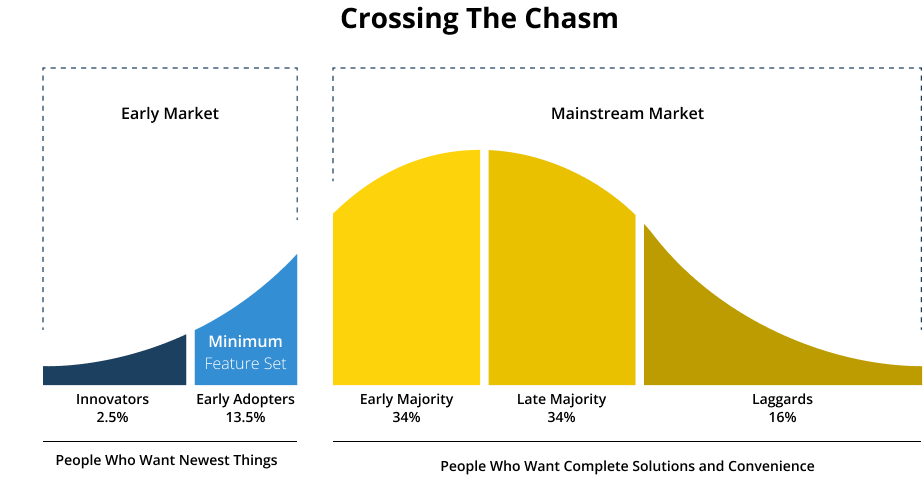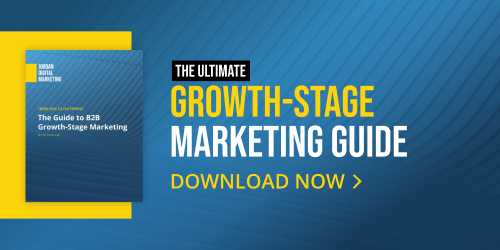There are fewer than 1,300 unicorn companies in the world. We’ve worked to grow several of them from seed stage funding onward.
So what did those companies do that 99.99% of their competitors didn’t? And how did we build marketing strategies that helped them get there?
In this post, pulled from our Complete Guide to B2B Growth-Stage Marketing, I’ll focus on what happens after you get Series A funding (which is tougher to do these days) and how to make your investors some of the happiest people around.

1. Balance short- and long-term audience optimization
If you’re truly bringing something new to the market, your first audience group will be innovators. They’ll be avid, engaged, and enough to give you some momentum – but they won’t get you to the big time.
Series A funding should give you some runway to expand your targeting to a broader ICP. This means research, testing, customer listening, and tight alignment with product and sales.
To truly make the most of your limited customer base at this stage, make sure you have a plan to optimize the LTV of innovators and the early adopters who make it through the purchase journey. This will extend your runway and build your LTV processes, which will have a huge impact as you begin to see scale increase.

2. Test. Everything.
About that testing: leave no element of your marketing to chance. Look at messaging, targeting, CTAs, landing pages, site engagement, etc. Make sure you’re aggressively analyzing things like purchase triggers that work and the needs they reflect in your ICP.
A couple of important notes here: first, start broad, not narrow. Testing themes is an important step that many startups skip. Second, don’t let tests drag on for the sake of hitting statistical significance. Set reasonable benchmarks that can identify winners and losers without a ton of volume.
And maybe the most important note: never stop testing. At this stage, you should at least have a twice-a-year testing loop and a process that ensures you’re feeding insights to your product and sales teams.
3. Don’t get pulled up the funnel just yet
Brand marketing done right is 100% essential to produce scale with reasonable CPAs. But you need to make sure to prioritize it after you capture the demand that’s already out there.
Why? Brand marketing is a long-term initiative without a lot of short-term return. Over-investing prematurely in brand marketing is a great way to make it look like you’re recklessly burning through your funding. Save the heavy lift of demand creation for after you optimize bottom-funnel initiatives like search, paid social, retargeting, and retention.
4. Stay open to change
You might be out of the head-spinning startup stage where direction can change by the month, but you need to be on the lookout for customer evolution and product improvements to bake into your marketing.
Establish regular feedback loops with customers, sales, and product, and make sure you have a process for incorporating the feedback into your testing schedule.
In short, remember that what got you to this point won’t get you unicorn status. Stay on the hunt for growth opportunities at every point in your funnel.
You can find more details about all of these recommendations in our Complete Guide to B2B Growth-Stage Marketing, which tackles the Launch, Bridge, and Traction stages to help companies go from great idea to unicorn status. Download today and chart your course to long-term growth.
